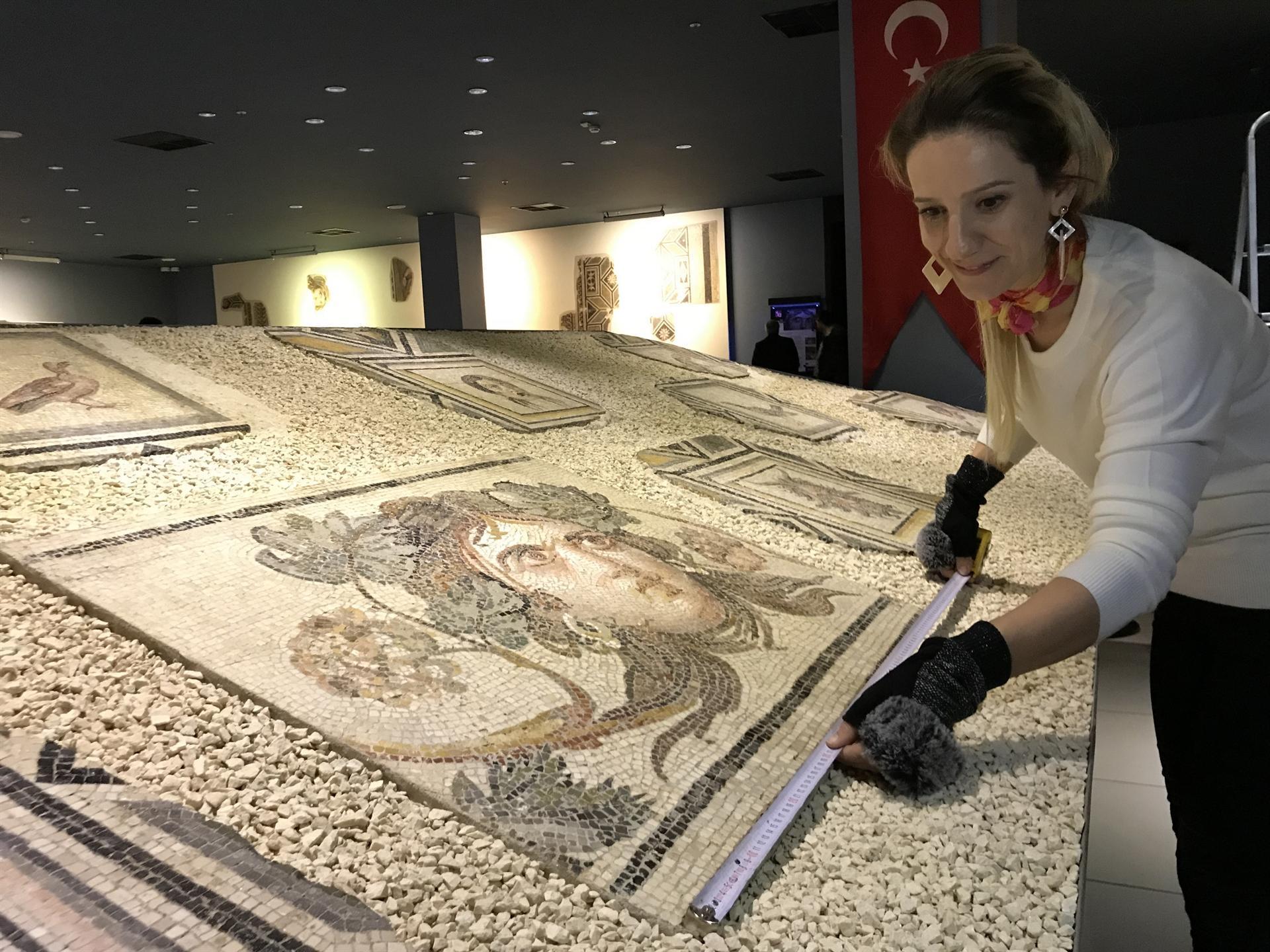
The reproductions of the 12 pieces of the “Gypsy Girl” mosaic brought from the U.S. to the southeastern province of Gaziantep will be sent to Bowling Green State University, where the mosaics had been on display for decades after being stolen from Turkey.
The reproductions will be made very similar to their original state, with artists set to use stones from the area where the mosaics where removed.
Staff at the Gaziantep Metropolitan Municipality Mosaic Training Center and the coordinator, Gülçin Sökücü, who is also a mosaic artist, had gathered stones from the banks of the Euphrates River near the Belkıs neighborhood in order to make the reproductions of the historical artifact in accordance with the original.
Sökücü said that in line with an agreement with the university in U.S., the reproductions will be sent to the university in return for the “Gypsy Girl” mosaic pieces that were returned to Gaziantep.
Stating that they would use the stones in the region where the mosaics were found, she said, “We want this work to be like the original. We gathered stones near the Euphrates River near the Belkıs excavation area. We will use these stones in the reproductions and make the mortar with the dust of the stones here.”
Reminding that the work to be done requires information and effort, Sökücü explained: “We have to collect a lot of stones because the works have a very rich color chart. We don’t want them to be the same. In this enchanting setting, we aim to gather the stones on the banks of the Euphrates River and bring them together in accordance with their originals. After collecting the stones, the exact size and dimensions of the works will be determined by scanning and a color chart will be created for the mortar. We will work with the excavation and restoration team to make the underlying textures in accordance with the original. We think it will take about six months because it is not like making a new eroded mosaic. We need to work on even the same eroded places. It requires a lot of labor and knowledge.”
On display in US for 53 years
The old city of Zeugma, located on the Euphrates River, flourished under Greek and then Roman rule before it was destroyed in war in the 3rd century AD. The 15-square-meter Gypsy Girl mosaic is the most prominent symbol of that history.
Discovered in the early 1960s during unauthorized excavations in the ancient Roman town of Zeugma, pieces of the mosaic were smuggled abroad and ended up at Bowling Green State University, Ohio, bought for $35,000.
Under an agreement signed this May by the university and the Culture and Tourism Ministry, 12 pieces of the mosaic were sent back to Turkey.
The pieces were recently put on exhibition on Dec. 8 at the Zeugma Mosaic Museum in Gaziantep.